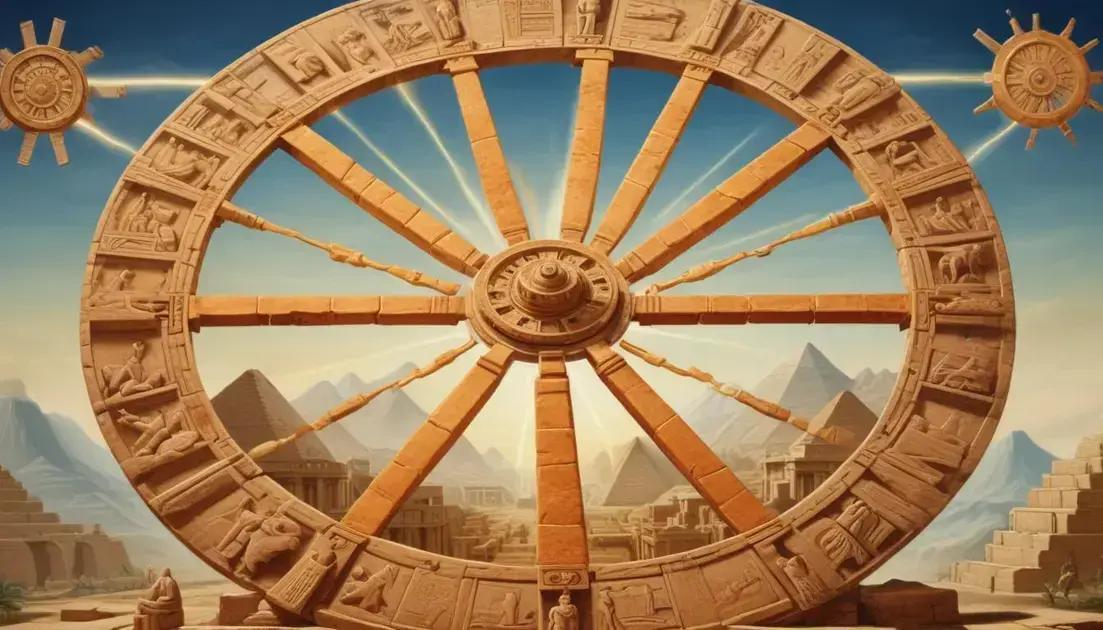
Code of Hammurabi: Laws Carved in Time
The Hammurabi Code, created around 1754 BC, is one of the earliest known legal systems. It established important principles like ‘an eye for an eye,’ fairness in justice, and clear regulations on family and trade. The code significantly influenced modern legal frameworks by emphasizing the importance of written laws and the protection of individual rights. Its principles continue to shape contemporary discussions on law and justice, demonstrating the enduring legacy of this ancient legal artifact.
The Hammurabi Code isn’t just ancient history; it’s a fascinating glimpse into how legal systems developed across time. Curious about its significance?
Introduction to the Hammurabi Code
The Hammurabi Code is an ancient set of laws that dates back to Babylon around 1754 BC. It’s one of the oldest written legal systems ever found. King Hammurabi created it to ensure justice and order in his kingdom.
What Makes the Hammurabi Code Special?
This code is unique because it was one of the first examples of a government formally establishing laws. It included rules for many aspects of daily life. For instance, it regulated trade, property rights, and family relationships.
Key Features of the Code
The laws are famous for the principle of “an eye for an eye.” This means that the punishment should match the crime, promoting fairness in justice. The code comprises 282 laws, touching various topics such as business and personal conduct.
How Was the Code Made Known?
The Hammurabi Code was inscribed on stone steles and placed in public locations. This way, everyone could see the laws and understand their rights and responsibilities. The laws were written in a clear and straightforward style. This made them accessible to the people.
Even today, the Hammurabi Code impacts modern legal systems. Many believe that its ideas helped shape laws we follow now. Understanding this code gives us insight into how ancient societies operated and valued justice.
Historical Context of Hammurabi
The Hammurabi Code was created in ancient Babylon, around 1754 BC. At that time, Babylon was a powerful city-state in Mesopotamia. It was situated between two rivers, the Tigris and Euphrates. This location made it a hub for trade and culture.
Life in Ancient Babylon
In Hammurabi’s time, Babylon was thriving. People engaged in farming, trade, and crafts. The society had distinct classes, with the king at the top and farmers and laborers at the bottom. These classes shaped how laws were enforced.
The Role of Religion
Religion played a big part in daily life. People believed that their gods had a hand in their success and failures. Hammurabi claimed that the code was given to him by the god Marduk. This made the code more powerful and accepted by the people.
The Need for Laws
With growing trade and urban life, conflicts arose. Disputes over property and disagreements among people became common. There was a clear need for rules to maintain order and fairness. Hammurabi saw this need and devised a solution through his code.
His laws aimed to protect the weak from the strong. They set standards for business practices, family life, and more. This addressed many societal issues of the time.
Key Principles of the Code
The Hammurabi Code is built on several key principles. These principles helped shape justice in ancient Babylon. They focus on fairness and responsibility in society.
“An Eye for an Eye”
One of the most famous ideas is “an eye for an eye.” This principle means that the punishment should fit the crime. If someone caused harm, they would receive a similar punishment. This idea aimed to prevent excessive punishment and promote fairness.
Different Laws for Different People
The code recognized that not everyone was treated the same. There were different consequences based on social class. For example, if a noble harmed a commoner, the punishment was harsher. This shows how the code balanced justice with social structure.
Family and Property Protection
The code set clear rules for family life. It addressed marriage, divorce, and inheritance. It aimed to protect family members and ensure fair treatment. Regarding property, laws ensured ownership rights and transactions were clear.
Trade and Business Regulations
The Hammurabi Code also governed trade practices. It included rules for prices, contracts, and trade disputes. These laws helped keep trade fair and secure for everyone involved. This was important for Babylon’s economy to thrive.
Overall, the principles of the Hammurabi Code laid the groundwork for future legal systems. They showed how laws could create order and justice in society.
Impact on Modern Legal Systems
The Hammurabi Code has had a lasting impact on modern legal systems. Its principles still resonate in laws today. Many ideas about justice and fairness trace back to this ancient code.
Influence on Rule of Law
The concept of a written law code helps ensure justice. By making laws public, people understand their rights and responsibilities. This idea is central to legal systems around the world today.
Fairness and Accountability
“An eye for an eye” is a principle that promotes fairness. This idea of proportional punishment is seen in many modern laws. It ensures that the consequences of a crime match the offense.
Legal Rights and Protections
The Hammurabi Code set standards for personal rights. It included laws about property and family, which are common in today’s legal frameworks. Modern laws protect individuals against unfair treatment, much like Hammurabi’s laws did.
Roles in Government and Justice
Governments today often have systems to resolve disputes. This concept of justice and accountability is rooted in ancient laws. Hammurabi’s rules emphasized that leaders must uphold these laws fairly.
In summary, many modern legal concepts originated from the Hammurabi Code. Studying this code gives us insights into how justice has evolved over time.
Conclusion
The Hammurabi Code is a vital piece of history. It shows how laws shaped societies in the past. Understanding this code helps us see the roots of modern justice.
Today, many legal systems reflect principles from Hammurabi’s laws. This includes the importance of written laws and fairness in justice. These ideas have stood the test of time.
By studying ancient laws like the Hammurabi Code, we appreciate how far we’ve come. We also recognize the ongoing need for fair and clear legal systems.
Conclusion
In conclusion, the Hammurabi Code is more than just ancient history. It laid the groundwork for many legal principles we still use today. Understanding this code helps us appreciate how far our legal systems have come.
The ideas of fairness, justice, and accountability found in the code have shaped modern laws. By studying these ancient rules, we can learn important lessons about justice and society. It’s clear that the past continues to influence the present.
As we reflect on the Hammurabi Code, we should remember that justice is a key part of our communities. Ensuring fair laws is essential for every society to thrive. The study of such historical codes reminds us of the ongoing importance of fairness and protection for all.


